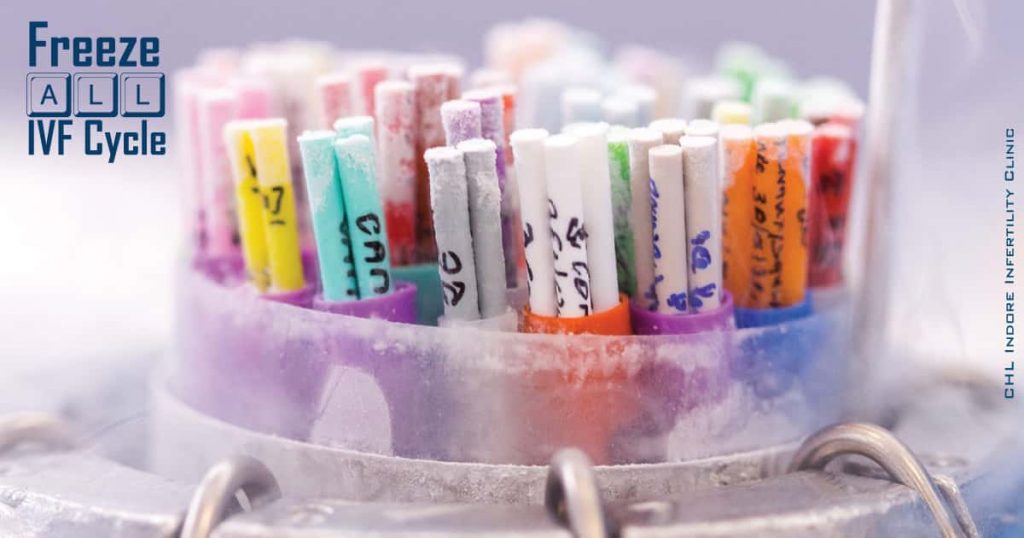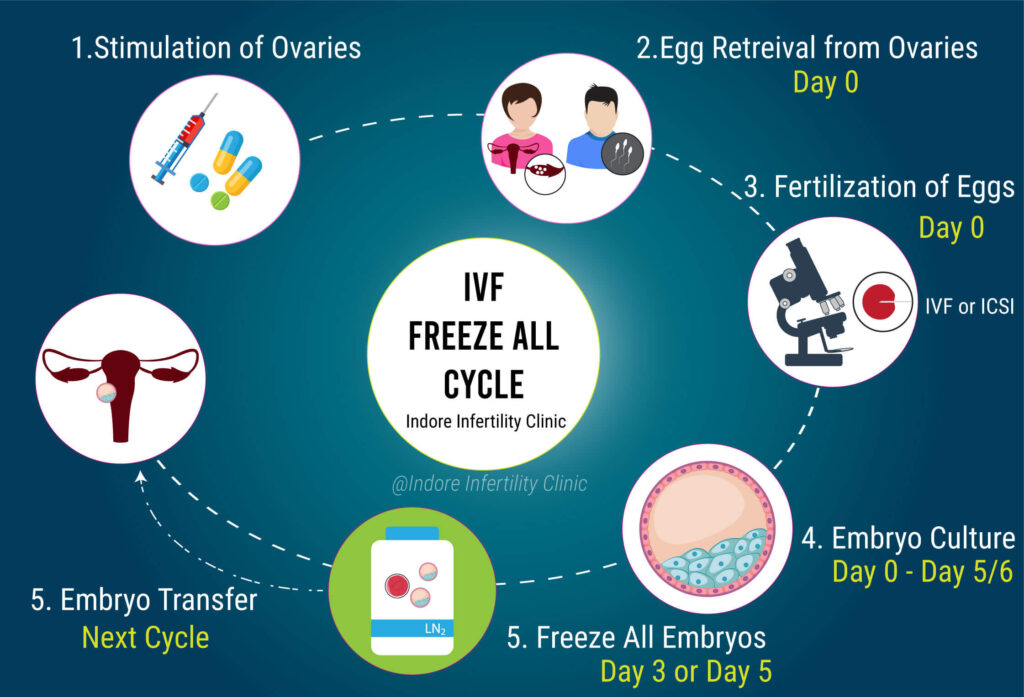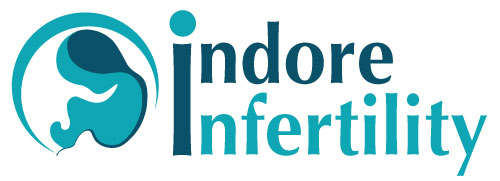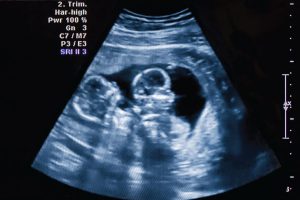
Conventionally Fresh Embryo Transfer in an IVF or ICSI cycle was done on Day 3 or Day 5 after OPU (OPU – Ovum Pick Up day is considered Day 0). This is known as a Fresh IVF ET Cycle.
Another viewpoint is that the environment of the uterus is not suitable for Embryo Transfer in a stimulated cycle. This is because the hormone levels in a stimulated cycle are very high and unnatural as compared to a natural cycle. Such high levels of hormone (Estrogen) are not good for implantation, because of which success rates in a stimulated cycle is less. In short, Ovarian Stimulation has an adverse impact on implantation rates in IVF / ICSI cycles.
Studies suggest that the modifications in uterine environment that occurs during a Controlled Ovarian Stimulation (Stimulation to ovaries using drugs to produce follicles), may be detrimental to the IVF outcome after Fresh Embryo Transfer compared to a Frozen Embryo Transfer cycle.
In older days where the cryopreservation of embryos was not as robust, clinicians were apprehensive of cryopreserving good embryo’s hence wanted to transfer them in a fresh IVF ICSI cycle. However in the past few years we have seen significant improvement in both Cryopreservation media and protocol, resulting in nearly 100% embryo and oocyte survivability. This has given confidence to Infertility Specialists and today, most of the clinician’s prefer a Freeze All IVF Cycle for their patients.

- Cancer patients, who may have undergone IVF cycle prior to chemotherapy in order to preserve embryos for later use.
- In order to prevent risk of OHSS (Ovarian Hyper Stimulation Syndrome), in patients with high number of follicles and as a result high level of estradiol, Freeze All cycle is recommended. In such patients, an Embryo transfer is done after the ovaries have reached a normal size and function.
- To allow genetic screening of Embryos using PGD or PGS. PGD or PGS is done in cases where either one or both partner have a risk of passing genetic disorders like thalassemia, sickle cell anaemia, cystic fibrosis etc to their progeny. In such a case, embryos are cultured till blastocyst stage, a few cells from the blastomere are extracted using a Laser and these cells are sent to special genetic labs for screening. Embryos are then frozen until the test result of PGS or PGD are received, which usually takes anywhere from 7 days to 5 weeks depending on the type of test. Once the results arrive, frozen embryos that have been identified as the ones that are genetically normal, shall be used to transfer in a Frozen Embryo Transfer cycle.




